Sam Quinones's Blog, page 11
November 2, 2015
Sad for 60 Minutes
I grew up admiring 60 Minutes for its storytelling and investigative reporting.
So many original stories. No one on television was doing what 60 Minutes was doing then. It looked so exciting and that was part of why I became a journalist.
So six months after the publication of my book Dreamland: The True Tale of America’s Opiate Epidemic, it saddened and appalled me to watch the show last night.
Last night, 60 Minutes ran a piece about heroin in Ohio. I’m very happy that these Ohioans, who I know and like and respect, are getting this megaphone. Their story needed telling.
But I have to stand my ground.
Months ago, my publisher and I pitched 60 Minutes on stories from Dreamland: first, the Xalisco Boys heroin traffickers, and then a story about heroin in Ohio.
Over the span of several months and several phone calls, 60 Minutes decided against both ideas.
The Xalisco story wasn’t doable, they concluded, after I convinced them that it was unrealistic to assume that they could show up and in 3-4 days have someone magically open up a heroin lab for them to film. I argued that there were other ways to tell the story. I found them sources, people with years of experience in the drug underworld who trusted me. That wasn’t good enough. They wanted traffickers who spoke English. I told a producer that the traffickers in the Xalisco system were working-class guys from Mexico without even sixth-grade educations and that they spoke only Spanish. He also insisted that 60 Minutes had to have film of dope being made, and had to have it accessible after three days of reporting on the ground.
The Ohio story that we then pitched 60 Minutes had no such cost/danger/language concerns. The state was awash in heroin now. America’s opiate ground zero – for many reasons I made clear in Dreamland. Pills had taken hold there first, and heroin had come sooner than it had anywhere else. Over lunch, a 60 Minutes producer even asked me what story I would do in Ohio. I gave her some ideas.
60 Minutes did go to Ohio. Made it look as if they had figured out who to talk to, and what questions to ask, all on their own. No mention of what led them there and what explained the whole story to them. When I asked them whether they were going to refer to my book, one producer said they wanted to focus on “local” folks. They could have done a local story about the heroin problem in Alabama, or anywhere else in America, but then they wouldn’t have had a book telling them specifically where to look, whom to talk to, and what the story was.
Parents and others in Ohio and elsewhere are understandably thrilled that major media like 60 Minutes are finally taking an interest in this topic. I’m glad for them and very happy that the issue is now getting attention. Wayne, Brenda, Tracy, Jenna, Rob and others spoke with eloquence and force, and in my opinion saved the piece.
I hope they won’t see this as raining on their long-overdue parade … but I have to say something to defend myself, my family’s sacrifice, and my work. If I don’t, who will?
I spent years working on this story, interviewing hundreds of people, poring over documents, taking collect phone calls from Mexican traffickers in prisons. Before doing it, I lived and wrote for 10 years in Mexico, which made me distinctly prepared to see a part of this story that 60 Minutes producers, judging from our phone calls, knew only because of me.
I took a leave of absence from the LA Times, where my book’s story began (as I note several times). I finally resigned from the paper to finish this book. I went all over the country. Each trip meant time away from my wife and daughter; each trip meant scrimping on meals and motels. When few people were talking about heroin, when most folks I met looked at me askance for researching the topic, I risked my professional career and my family’s financial future: all to find a story that I believed to be profound in its nationwide impact, and in what it says about our country.
I’m thrilled to receive emails like this one, from a retired undercover narcotics officer, who helped in my heroin education:
“The 60 minutes Heroin story last night was the “CliffNotes” version of your book, they needed to have you on that piece! … These news stories are great but they are quickly becoming “old news”. They need to go a few layers deeper. It’s time to talk about solutions! Thanks to guys like you the nation now knows very clearly what the problem is, now it’s time to move the national narrative towards developing real solutions through accountability. … Keep up the good fight Brother …Be Safe!”
It isn’t often that a book more or less scoops radio, TV, and print. But I believe that, to a large degree, is what Dreamland did.
Since its release, I’ve been disappointed to see Time, Sports Illustrated, Washington Post and now the New York Times publish stories on topics that I dealt with first in Dreamland and not mention it. (Btw, my book clearly cites several books to which I am indebted, both in the text and in the acknowledgements.) But 60 Minutes seemed to me to cross a line.
And even after the months of dealing with them, I might not have written this blogpost had not Sunday’s show itself seemed to involve so little original reporting and seemed to rely so heavily on my book.
Is that what it means to be 60 Minutes these days? Just riff off the work of an independent reporter and do nothing to recognize it?
The whole episode reminds me that 60 Minutes is no longer a standard bearer of anything except cost containment. Shows like 60 Minutes no longer set the national debate. They’re followers, imitators, 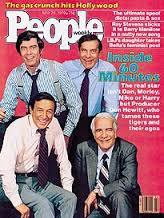 now, where once they were leaders.
now, where once they were leaders.
Yet I’m also invigorated, exhilarated even, by this experience. For it means that I and many independent colleagues have wide-open spaces now where we can harvest stories. That if we’re willing to put in the work and take the risks, that important stories will be ours to find. It means it’s a great time to be an independent journalist.
The Daily Show made fun of TV cable journalists, and gave respect to real reporters. It taught a generation to be skeptical of what was reported to them on television. The next step is to elevate real independent journalism.
As desiccated titans collapse, abdicating any role in maintaining standards of journalism, we now have this terrain to ourselves. We must work it, push at it, be relentless. But it’s there. People want it, thirst for it, as I’ve found in the reaction to Dreamland. When we find these stories – as now only we are equipped to do – they will probably mean more than ever.
Remember, too, that if you want risk-taking, on-the-edge, original, independent, red-blooded American journalism, then you have to look pretty far past 60 Minutes. The Atlantic is doing some good stuff. As is the Atavist. Might check out the Marshall Project. I thought Grantland looked good before ESPN pulled its plug. I’m sure there are many places I don’t know of – and I invite them to chime in.
I’d also strongly suggest that the books recently written by my friends and former colleagues Gerry Hadden, Alfredo Corchado and Jill Leovy are well worth your time.
And if you want to read the full story of America’s opiate epidemic from a journalist with no one but his wife and daughter standing behind him, then I’d suggest my own book, Dreamland.
The post Sad for 60 Minutes appeared first on True Tales: a Reporter's Blog.
October 30, 2015
Kaleidoscope, Death, and Claremont’s music scene back when
My hometown of Claremont, California’s own Kaleidoscope was one of the great bands of the late 1960s.
David Lindley and Chris Darrow were two of its mainstays.
My dad bought Side Trips at a street fair at Pitzer College where the band performed, brought it home and we played the hell out of this album for the next five years, until it basically could not be triaged.
Kaleidoscope, like many musicians in town back then, melded folk, bluegrass, psychedelia, Middle Eastern music, R&B, and about two dozen instruments between them.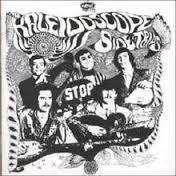
Makes you realize how rich in musicians, guitar players mostly, was Claremont in the late 1960s and much of the 1970s – due largely to the Folk Music Center and the five colleges, which, apart from CMC, had a pretty rich hippie scene. I remember because I accompanied my dad to a few anti-Vietnam marches when I was like 8 or so. Got a shirt stencil-painted with a clenched fist. Those were the days.
We were from the Claremont that’s south of Foothill, which only people from the town then will understand.
There’s great original music all the way through this record. But the dirge “Oh Death” seems fitting to the season.
The post Kaleidoscope, Death, and Claremont’s music scene back when appeared first on True Tales: a Reporter's Blog.
October 27, 2015
Heroin and the Sugar Added
We have spent too long demanding that doctors fix our pain.
As Americans, too often we’re angered when they don’t – or, more likely, can’t – as if we’re entitled to solutions.
That wouldn’t be so disturbing were it not that at the same time it seems a national malaise that we don’t feel much accountability for our own wellness.
This combination has given rise to the overuse and overprescribing of pain pills. They are the solutions that doctors have for a country that doesn’t (won’t) address its pain in a more holistic way.
But those pills are also the reason why across America we have so much addiction to opiates and to heroin.
I’m a layman, but it’s my understanding that a lot of the pill prescribing is for pain problems that could be better addressed or reduced by better wellness: more exercise, healthier diets, less sitting, more walking, etc.
In that regard, a new National Institute of Health study in the journal Obesity suggests that consuming fewer sugar-added foods and drinks results in very quick changes to a kid’s health. Researchers studied 43 obese children and found that when they replaced foods that had sugar added (sweet teas, pastries, even – who knew? – chicken teriyaki, which is apparently very sugary) with foods with no sugar added, while keeping the calorie consumption the same, the kids’ problems with hypertension, blood sugar, cholesterol improved within 10 days.
The research suggests that calories that come from sugar added to foods are harmful.
All the more reason to cut down substantially on (very unhealthy) sodas, sugary drinks and foods where sugar is added.
Of course, that does not include food in which sugar comes naturally – primarily fruit.
Now we also all need to get up and walk a mile. I’ll go first.
The post Heroin and the Sugar Added appeared first on True Tales: a Reporter's Blog.
October 26, 2015
Why I Voted Against California’s Prop. 47
Last year, Californians were asked to approve Prop. 47, which made misdemeanors of several felonies.
The idea was to send fewer people to prison and a majority of Californians voters approved it. I wasn’t one of them.
I voted against Prop. 47 for exactly the reason mentioned in a recent op-ed piece in the LA Times: that addicts frequently need the threat of jail or prison to get their minds around the idea of entering rehab.
The threat of prison was, in other words, a rock bottom from which some could achieve recovery.
 This comes from interviews with many recovering addicts whose lives were saved by being arrested, by going to jail and facing prison time.
This comes from interviews with many recovering addicts whose lives were saved by being arrested, by going to jail and facing prison time.
The idea that government or society should play no role in pushing addicts into recovery is foolish, dangerous, too. It does no one any good to remove that threat.
But that’s what Prop. 47 does, to the detriment of folks addicted to drugs, I believe.
The op-ed makes the point that it’s leading to an increase in crime. That may be true. But from my standpoint, having written Dreamland, and seeing widespread addiction to pain pills and now heroin across America, it is the former reasoning that makes most sense, particularly given how horrifying difficult it is for so many to kick their habits.
Prop. 47 couldn’t have come at a worse time. Addicts need any kind of impetus they can get. Unfortunately, for many in California, it no longer exists.
The post Why I Voted Against California’s Prop. 47 appeared first on True Tales: a Reporter's Blog.
October 22, 2015
Eleuterio Cruz – RIP
I’m saddened to report the death of a fine man, Eleuterio Cruz, a campesino from the village of Xocotla high on a mountain in the state of Veracruz, Mexico. I visited Xocotla five times in 2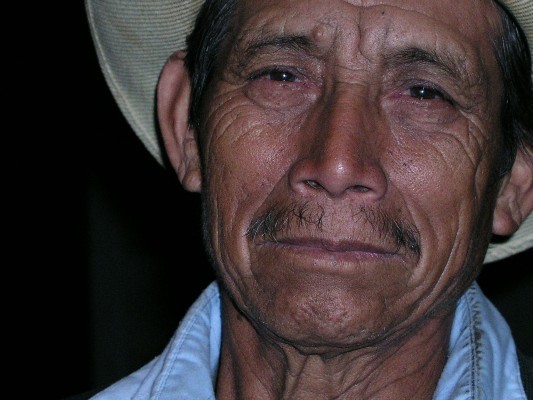 002 and 2003,
002 and 2003,
Eleuterio Cruz
where I met with him, played guitar with him once, and mainly listened to his stories of his town.
He was of a generation of men from the town that for 31 years spent every Tuesday taking off from the farmwork that fed their families to hack a five-mile road out of the mountain that would connect Xocotla with the rest of the world.
They started in 1945 and finished the road in 1976.
It took them that long because they had only picks and shovels.
Mr. Cruz was the grandfather of Delfino Juarez, whose story I told in my second book, Antonio’s Gun and Delfino’s Dream. He was a nice man, kind and generous, and I remember him with great fondness.
Here’s what I wrote about him in the book:
Eleuterio was born in 1933. He began working on the road when he turned seventeen. For the next generation, every boy did the same.
Today, Eleuterio is sixty-nine and has a sharp nose and jaw. His skin is taut, dark, and calloused by years of hard farming. Raising corn and potatoes all his life on a hilly patch of land made him spry. He’d played guitar in cantinas for many years; he drank a lot, then he turned to Jesus.
Eleuterio worked on the road as his twelve children were born, and as they grew up, and as they had the first of his thirty-five grandchildren. He served as mayor for a spell and organized roadwork crews.
Every man in Xocotla had to work on the road one day a week. On Tuesdays they would usually gather their tools and march down to chop, shovel, and pick at the mountain.
The Second World War ended with atom bombs. Then came the Cold War and an arms race. In Xocotla, the men had no explosives, so they hammered and chipped at solid rock, and at times clawed at it by hand, then dumped the debris down the mountain.
The world outside was changing quickly. The Cuban Revolution, the Vietnam War, the student rebellions of the 1960s, the hippie era, a man on the moon, the drugs and sex revolution, dictatorships and coups in Latin America, the Tlatelolco massacre, and the Olympic Games in Mexico City. Through it all, Xocotla’s men remained steadfast to the idea of their road. Every Tuesday the mountainside rang with their picks and shovels glancing off the rocks.
“No one died,” said Eleuterio.
One man’s foot was crushed as he hammered at a massive boulder that stood in the road’s path. No one touched that boulder for a generation after that, believing it hid the devil, who wanted to take people.
“I don’t think so,” Eleuterio said. “This person didn’t know how to use a sledgehammer, which is why the rock hit him in the foot.”
For a full thirty-one years the men of Xocotla pounded at that five-mile road. As they measured progress in centimeters, Mexico’s population went from twenty million people to fifty-five million people. Six Mexican presidents, and twelve Xocotla mayors, came and went. A Mexican middle class emerged, though none of its members lived in Xocotla. Through it all, Xocotla’s men kept at their colossal hand-carved public work. The government gave them no help until the end, when it provided a gas-powered jackhammer with which the men shattered the last obstacle in their way—that solid rock where the man had injured his foot.
Finally, in 1976, they finished. A red Jeep carried the priest from a town at the bottom of the mountain up the zigzagging, rocky five miles of one-lane road. Xocotla had a party. Eleuterio Cruz was forty-three; he’d worked on that road for twenty-six years.
My condolences to Delfino and the rest of his family.
RIP Eleuterio Cruz.
The post Eleuterio Cruz – RIP appeared first on True Tales: a Reporter's Blog.
September 24, 2015
Pope Francis, Community and Heroin
I’m speaking at Notre Dame University today, the day that Pope Francis gave his beautiful talk to Congress.
What struck me about his speech was not just what he said, for we’ve heard some of that before, though it never gets old. But what struck me most was the way he said it: softly, slowly, building each idea logically on the last.
We live in an era of bombast. It is everywhere. It’s not just Donald Trump, who personifies it, in my opinion. It’s loud-mouthed, poorly spoken athletes on ESPN. It’s crank screechers on 24-hour news and talk ra dio. Reality show bimbos. It’s the babble of unimportant breaking news that takes up so much space on newspaper websites. The constant yammer on Facebook about stuff that is really personal and ought to be kept that way. We never get a minute to ourselves, it seems.
dio. Reality show bimbos. It’s the babble of unimportant breaking news that takes up so much space on newspaper websites. The constant yammer on Facebook about stuff that is really personal and ought to be kept that way. We never get a minute to ourselves, it seems.
Of course, our national politics is infected with it. Congress appears incapable of doing anything but taking one extreme or the other. Talking points – that’s an interesting concept. “Talk to us about X…” is another – just open your mouth and start talking, implying that thought doesn’t need to occur first.
Thus it was so therapeutic to walk along the quiet paths of the school’s campus and listen to Pope Francis use terms like “cooperation,” “union,” “community.” It was sweet to hear him talk about the monk Thomas Merton.
These themes – or the lack of them in our civic life – are integrally wrapped up in why we have so much heroin abuse in America today.
I believe we’ve spent decades destroying community, mocking and clawing at the girdings of government that provide the public assets and infrastructure that we took for granted and that make communal public life possible. We exalted the private sector, and accepted the free market as some infallible God and thus allowed, encouraged even, jobs to go overseas.
We seemed to fear the public sphere. Parents hover over kids. Alarmed at some menace out in public, they accompany their kids everywhere they go. It all seems connected to a fear of pain, an idea that we can avoid pain, avoid danger. As a country, meanwhile, we have acted as if consumption and the accumulation of stuff was the path to happiness.
We’ve built into our suburbs an isolation that we called prosperity. Added to that mix was the expansion of technology that connects us to the world but separates us from our next-door neighbor.
We wound up dangerously separate from each other – whether in poverty or in affluence.
Kids no longer play in the street. Parks are under-used.
Why then do we wonder that heroin is everywhere?
Heroin turns every addict into narcissistic, self-absorbed, solitary hyper-consumers. A life that finds opiates turns away from family and community and devotes itself entirely to self-gratification by buying and consuming one product – the drug that most makes being alone not just all right, but preferable. It is the final expression of values we have fostered for 35 years.
I believe more strongly than ever that the antidote to heroin is community – doing things with neighbors in public in a way that once came quite naturally.
That’s why I also loved Pope Francis’s speech. He seemed to be touching on the stuff that troubles us as a country most deeply – and for which heroin is just the latest, though perhaps most potent, symptom.
And he did so quietly, softly – which I hope meant that people heard him more clearly.
The post Pope Francis, Community and Heroin appeared first on True Tales: a Reporter's Blog.
September 14, 2015
A Great American
I just finished David McCullough’s terrific biography of John Adams.
John Adams was a simple man. He loved the same woman all his life. He never owned a slave. In his youth, even as an ardent revolutionary, he defended British soldiers in a trial because he believed everyone deserves a fair hearing in court.
He proposed complete religious freedom because he held firm to the Protestant view that every man is equal before God. He endured years-long separation from his family living in Europe doing the country’s difficult and crucial foreign business in England, France and the Netherlands. He despised the luxury he saw in Europe, and believed it would lead to corruption.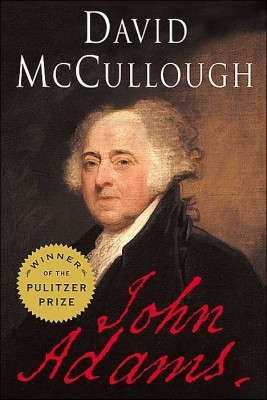
He believed strongly in the balance of powers. He lived his last years as a farmer, still earning a living, living a simple life. He also read and wrote voluminously.
I have been developing a considerably dimmer view of Thomas Jefferson, Adams’ vice president and successor to the White House, that this book did nothing to change.
Jefferson wrote the Declaration of Independence, and promoted religious freedom, and established the University of Virginia. But he owned dozens of slaves, fathered children with one of them and freed only five of them upon his death – the mother of his children was not among them.
He lived the life not of a simple American farmer, as Adams did before and after his presidency, but of a European aristocrat – expanding then tearing down Monticello several times, all of which depended on revenue generated by the labor of his slaves. Adams died solvent; Jefferson, despite owning slaves, died $100,000 in debt.
Perhaps slave ownership allowed Jefferson the luxury of his utopian vision of a country of small farmers and an equally small government. He never apparently asked himself the hard questions of how those small farmers might get their goods to market without government taxation that allowed for the building of roads and bridges, and law enforcement to keep the goods safe. This vision sadly left him equally enamored of the French Revolution, even after that event descended into wanton murder. These victims he viewed as casualties of war, and, from this grew his famous statement that “the tree of liberty must be refreshed from time to time with the blood of patriots and tyrants.”
Adams was the deeper thinker and had a more mature understanding of self-government. He understood that for a union to work, taxes had to be paid, and a national government thus allowed to function. Anarchy would result otherwise. It seems to me this is an idea one segment of our country doesn’t, or doesn’t want to, understand.
Adams began the U.S. Navy, and thus kept us from war with France when we were too small and weak. To do this he imposed taxes that earned him Jefferson’s ire, his own defeat, but the country’s lasting gratitude.
Adams also rightly feared the horrible cost slavery would exact on the country, and abhorred its expansion following the Louisiana Purchase.
Both men, however, embodied the key to the success of the American Revolution, for both were lawyers. Despite its numerous contradictions, slavery being the main one, the American Revolution was made by lawyers, and thus the rule of law not of men was its cornerstone. The tenets of self-government they had thought out and debated in some detail. This is why the Revolution did not collapse into slaughter.
Having lived in a country where the rule of law is weak, I can say that this is fundamental. There is no justice, no equity, no development, no innovation without the rule of law. To the fact that the Founding Fathers were, for the most part, lawyers, and many of them thoughtful about the biggest questions, we can attribute the Revolution’s success.
Interestingly, it might easily not have been so had the wrong people gained power – Alexander Hamilton for one, I suspect. We’re enormously lucky that our first president was, though a general, so unwilling, and left power as quickly as he could.
At the end of their lives, Adams and Jefferson, friends, then adversaries, were friends again.
In one of the great details in U.S. history, the last two signers of the Declarations of Independence died within hours of each other on, amazingly, July 4.
The post A Great American appeared first on True Tales: a Reporter's Blog.
September 11, 2015
On 9/11
On September 11, 2001, I was living in Mexico City, preparing to go on a trip with a driver from a Mexico City mortuary. I was working in the capital at the time as a freelance writer.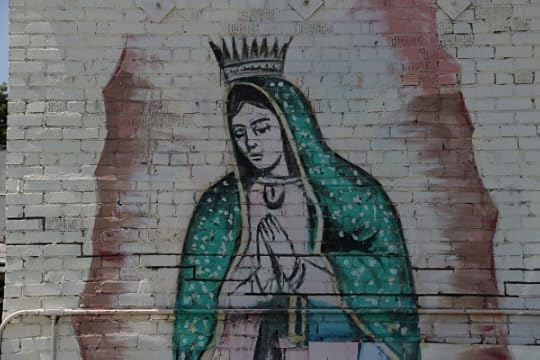
Part of the mortuary’s business was to pick up the bodies of immigrants who had died in the United States and whose families had flown them home to be buried.
The mortuary would provide the service of retrieving the body and driving it back to the immigrant’s home village. That morning the body of an immigrant was due to arrive from Denver.
I was set to go with the driver to the airport and then to the village.
I called the mortuary and the owner told me, “There are no flights today. I think someone just bombed your country.”
I spent the next two weeks in front of a television.
The post On 9/11 appeared first on True Tales: a Reporter's Blog.
September 4, 2015
LA crime stats – Without Context We Are Lost
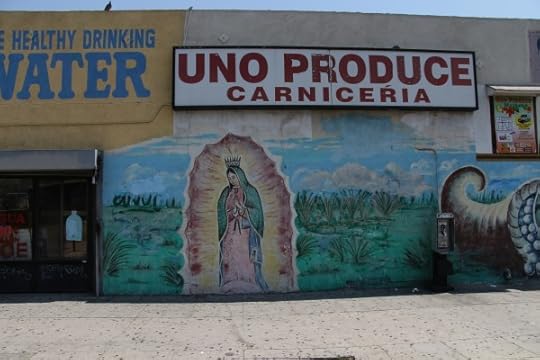 The latest homicide figures in Los Angeles have set off a shriek-a-thon that is weird and seems to me fed by 24-hour-news culture, which is dangerous because it is utterly devoid of context.
The latest homicide figures in Los Angeles have set off a shriek-a-thon that is weird and seems to me fed by 24-hour-news culture, which is dangerous because it is utterly devoid of context.
I believe in police accountability, smart deployment of officers and using Big Data to analyze crime trends and respond to them. I also believe it is important to hold elected officials accountable on how city resources are used and deployed.
But as citizens, we too have a responsibility to hold ourselves accountable. We are duty-bound to get a grip, seek context, not start shrieking for shrieking’s sake.
By using only rates of increase, those who talk about this latest “surge” in crime are avoiding context.
And here it is: The city has had 185 homicides in eight-plus months – an average of about 24 a month. It’s unlikely to maintain that pace, as August almost always tallies the highest numbers of homicides and adds briefly to the statistical average. But even if it does, the city will still tally fewer or roughly equal to the number of homicides of any year this century.
In fact, the LA homicide figures this year will almost certainly be below anything tallied since the 1960s.
That is not to say that LAPD doesn’t need to readjust its force deployment. I’m not a police commander but if one month shows that kind of increase (41 homicides in August), stands to reason it would require a reassessment.
Nor do I say this to play down what it means to have homicides in one’s neighborhood. I’ve covered more homicides than almost any reporter I know, and I understand more deeply than most, I believe, what they do to a family, and to a neighborhood, to a city. So I do not say this to make light of what’s happened in parts of L.A.
But we too have a duty, a responsibility, to remain sane, to appreciate the stunningly positive story of what has happened to crime in Southern California (and gangs above all), to not start shrieking over every little statistical increase.
And above all, to use context. Context. As a journalist, I can say that without it you are lost.
The post LA crime stats – Without Context We Are Lost appeared first on True Tales: a Reporter's Blog.
August 29, 2015
Katrina New Orleans
Ten years ago, hurricanes whomped through southern Louisiana and the levies broke and everything flooded.
Six months later, I spent six weeks in New Orleans covering reconstruction for the LA Times before and after the first Mardi Gras following the disaster.
Photos here are from that time.
While there, I told the story of the Latino workers who had shown up – a quiet cavalry to the rescue – just as everyone was fleeing the city in the weeks following the flood.
The workers I interviewed described an amazing image that took place three weeks after the flood, in the days when residents were briefly allowed back in the city. They came then left quickly as the city was unlivable. On one side of the freeway, heading out of town, were their cars and trucks packed with every belonging a family could salvage. On the opposite side, leading into New Orleans, were quietly coming cars filled with these guys — Latino immigrant workers, each with no more than a backpack and a few tools, who heard there was work. Armies of Mexicans and Salvadorans, mostly, who lived in the Martian landscape, coated with the grey sludge of disintegrated dry wall, that the city had become in the weeks after the hurricane and put up those blue tarps of the roofs of thousands of houses.
Many of them stayed for the day labor they could find, hanging out at Lee’s Circle. A lot of them didn’t get paid – usually stiffed by Latino immigrant contractors, who also descended on the city. When I met these workers months later, many swore they never would work again for a Latino contractor. It was a Wild West of labor law, and was still when I was there.
The hurricane did a lot, but to me what it did most graphically was to show how ill the city had been before the levies broke. I’d been to NOLA several times for the music and food and never seen the pathology.
When I arrived to cover it as a reporter, I learned about it more deeply. It was a city that had the same population in 2005 that it had in 1930 – unlike many Southern cities, which had grown vibrant in those years. It relied mostly on tourism jobs, which paid poorly.
Before the hurricane, almost no Mexicans lived in NOLA – which is a bad thing because Mexicans are usually found where an economy is growing and jobs abound. Mexicans are a pretty faithful barometer of economic vibrancy, or the lack of it. They came after the flood.
I remember the city funded its public defenders from traffic fines and had seven property assessors for 164,000 properties, which is why the city also had so little property tax revenue. (LA County has one assessor for 2.4 million properties). One assessor, from a small district the size of a large neighborhood, had had the job for 15 years or so. Someone with his last name – an uncle and his father – had had the job since the 1920s.
Municipal governance was arthritic. Everywhere – in the hospital, the schools – the signs of decay were present long before the hurricane showed up. Katrina didn’t cause the illness; it laid it bare.
Six months later, as these photos attest, the mud and grime was gone, but reconstruction seemed almost nil.
Still, it is one of our greatest cities, and I love it, in part for how it mixes folks up, throws everyone together, a big raucous America.
The post Katrina New Orleans appeared first on True Tales: a Reporter's Blog.



